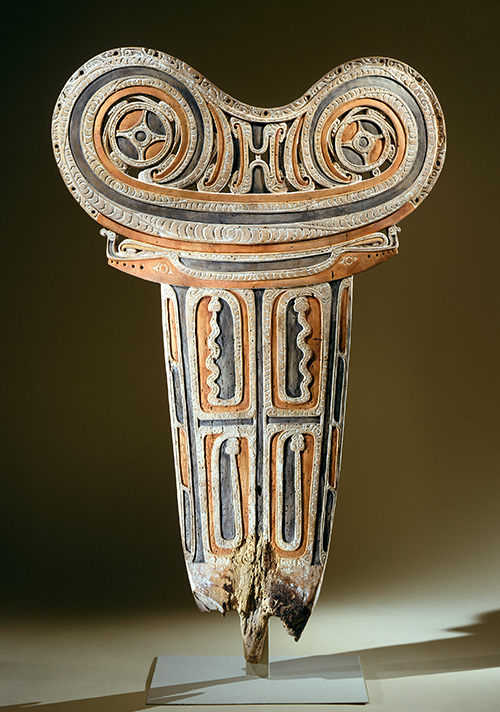Asian/Pacific American Heritage Month: Papua New Guinea
Oceania is a vast expanse of the Pacific Ocean that covers one-third of the earth’s surface. Contained in Oceania are the cultural-geographic areas of Australia, Melanesia, Micronesia, and Polynesia. Melanesia includes New Guinea and the islands that extend eastward as far as Fiji and New Caledonia. Some 27,000 years ago, people from southeast Asia settled the islands north and east of New Guinea.
Between 4000 and 7000 bce, settlers were cultivating the land and raising animals. The settling of the rest of Melanesia is thought to have been part of the spread of a culture called the Lapita. The exact origin of this culture is up for debate, as is the extent of their colonization efforts.

In celebration of Asian American and Pacific Islander Heritage Month, our Curator of Images and Art Historian, Karl Cole, has created a special series of Blogs. We’re extra lucky because he shares additional lessons with the whole Davis Team each morning. The following “Epiphany of the Day” explores the Massim culture area of islands associated with southeastern Papua New Guinea and the seagoing outrigger canoes it’s famous for.
New Guinea, divided between Irian New Guinea (western, part of Indonesia) and Papua New Guinea, is the location of the most heterogeneous cultures in Melanesia. It is also the island of the most diverse artistic production in Oceanic art. Papua New Guinea is the most prolific region of artistic expression, especially along the Sepik River, located in the northeast of the Asmat region. Sculpture, painting, or carving adorns almost every object of secular and ritual life.
The Massim culture area of islands associated with southeastern Papua New Guinea is famous for its seagoing outrigger canoes, used in the inter-island network of ceremonial gift exchange known as “kula.” These canoes are the object of elaborate ritual and ornamentation. The double-lobed canoe splashboard (rajim) is set transversely across the prow. The splashboard believed to ward off flying witches (yoyowa) that prey on shipwrecked crews, endowing the canoes with lightness and swiftness to make them faster and more seaworthy.
Canoe and splashboard sculptors are initiated into a highly specialized and ritualized apprenticeship at a very early age. The apprenticeship includes learning magic spells and incantations, as well as adhering to a very rigorous system of taboos that need to be observed to carve beautiful and effective splashboards (the two qualities being synonymous in Massim culture).
About the image: Intricately incised and decorated on one side only, the canoe splashboard pictured above is composed of a central shaft with two mirroring volutes that spiral out and down to either side. A series of curvilinear abstract designs and anthropomorphic motifs carved in low relief and openwork surround the splashboard’s painted register. The snake emblems on the lower shaft are possibly the symbol of the ancestral hero monikiniki, considered by some in the Massim culture to be the founder of the “kula” exchange.


Comments